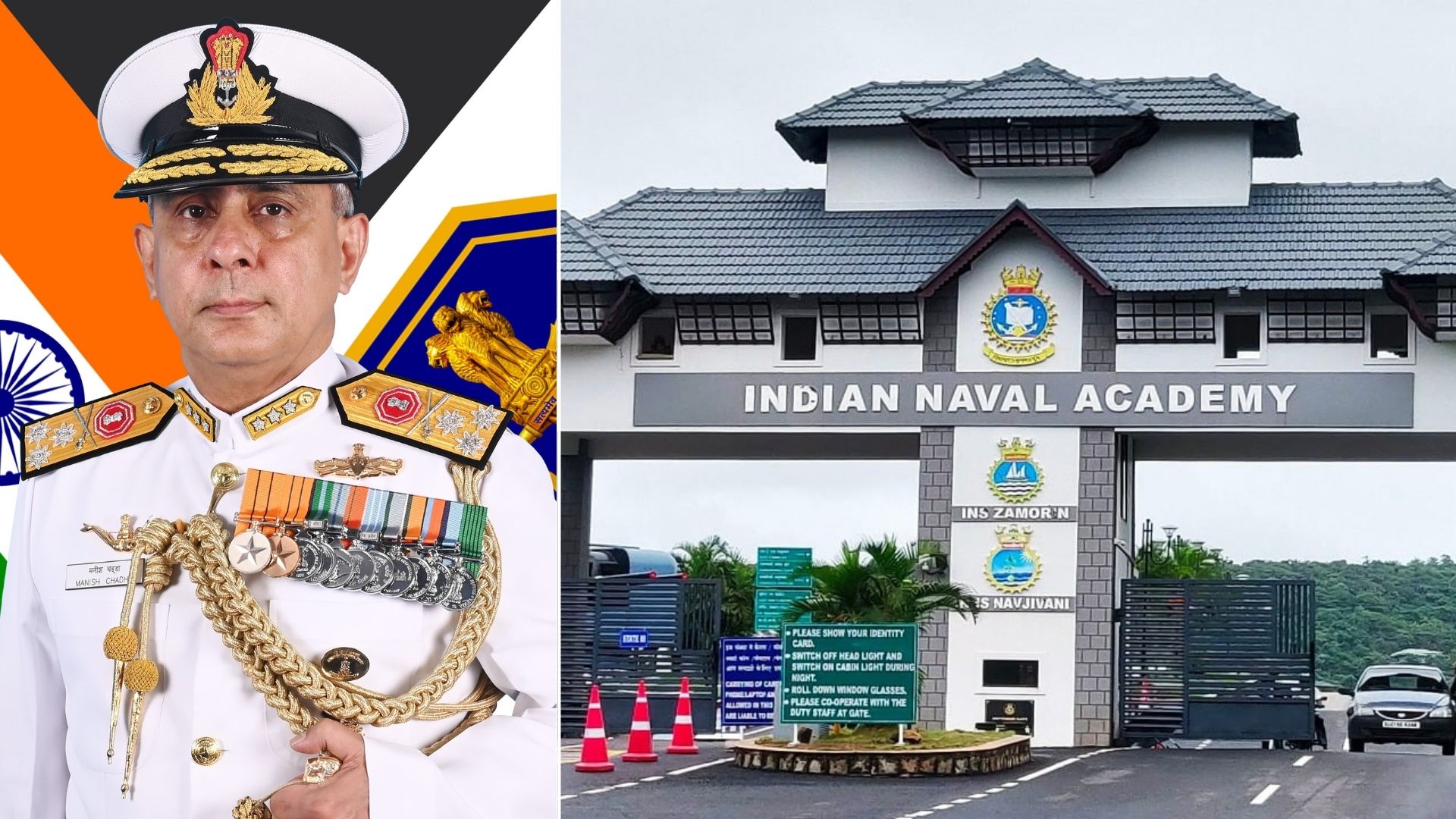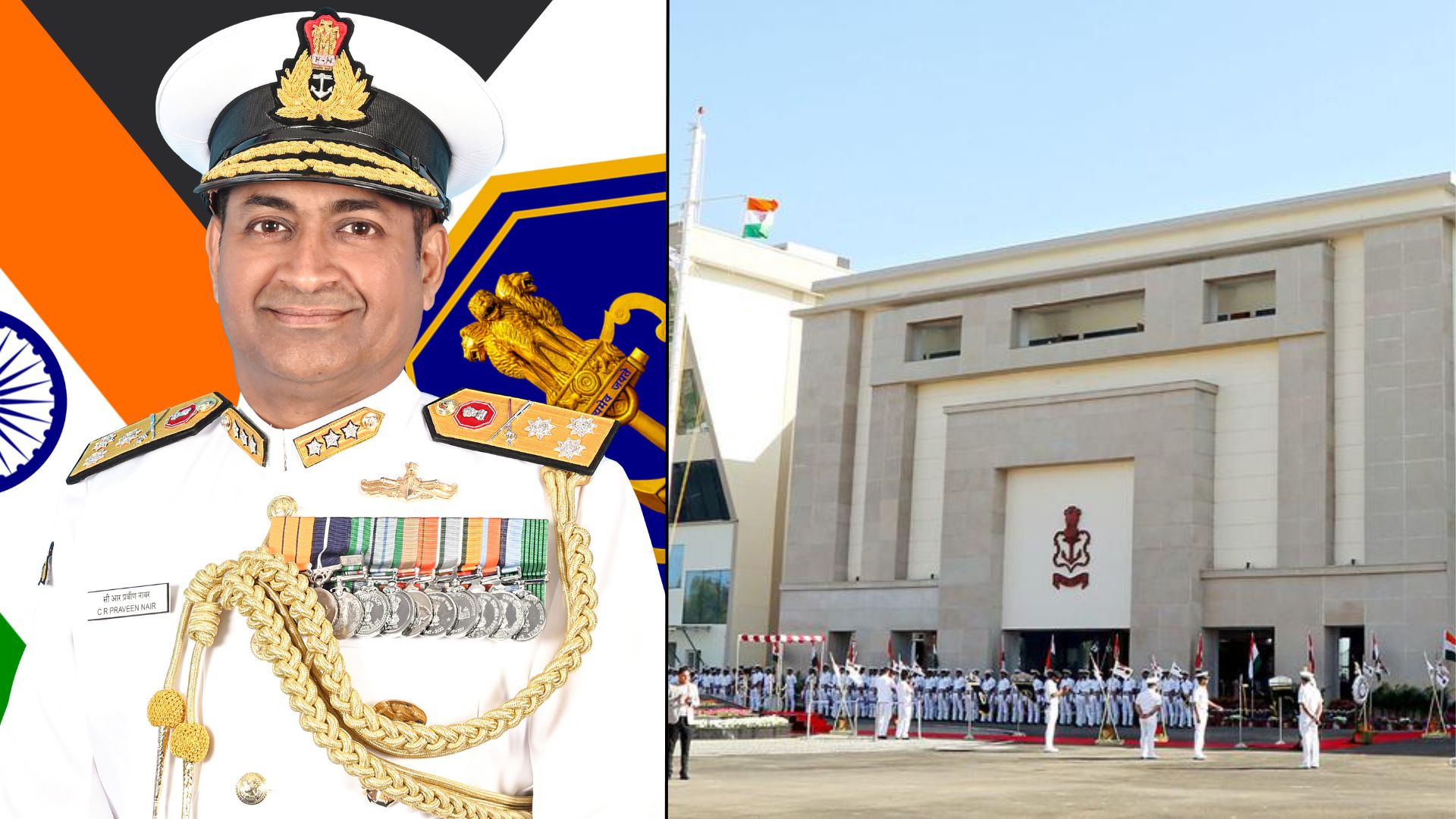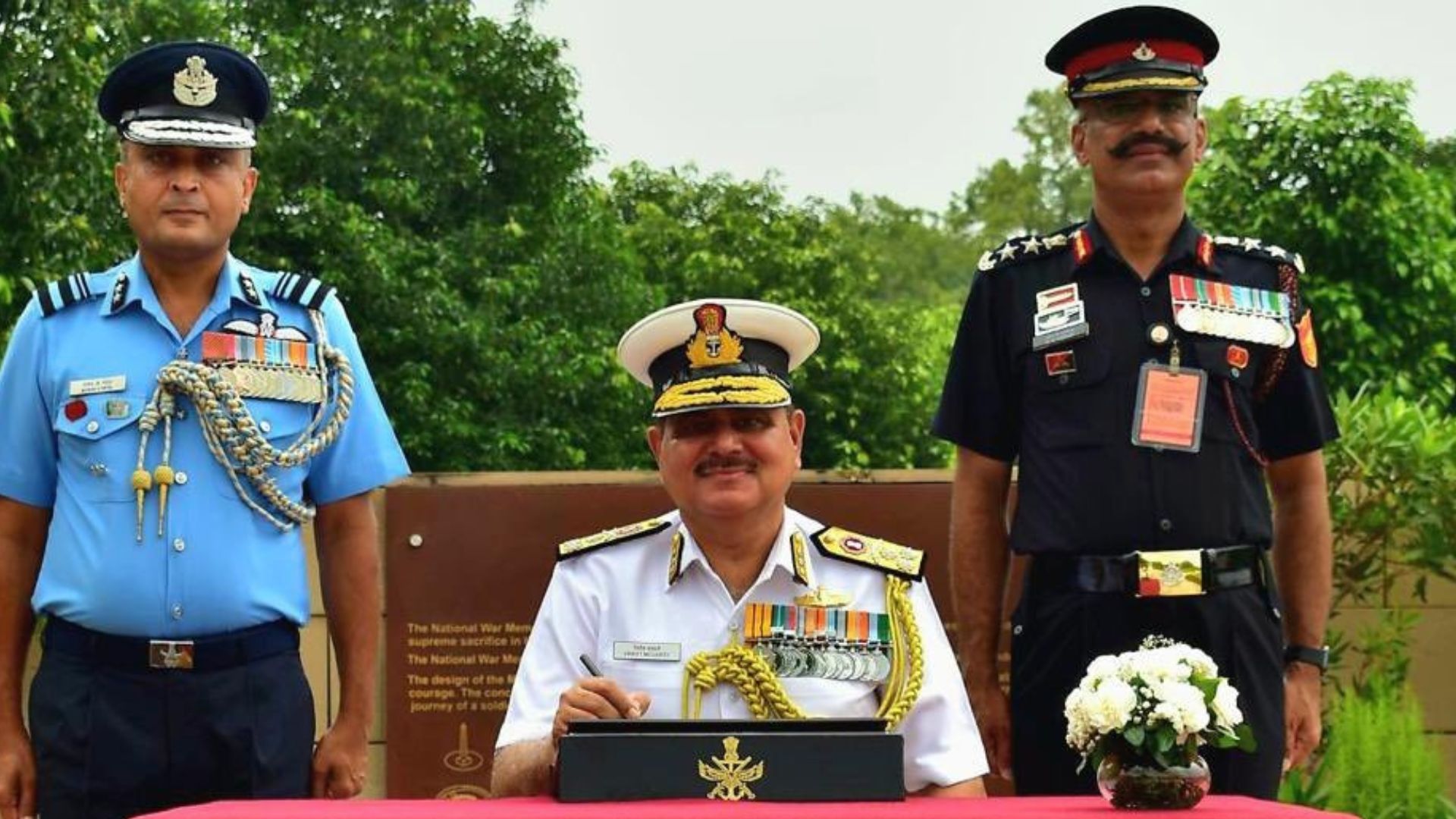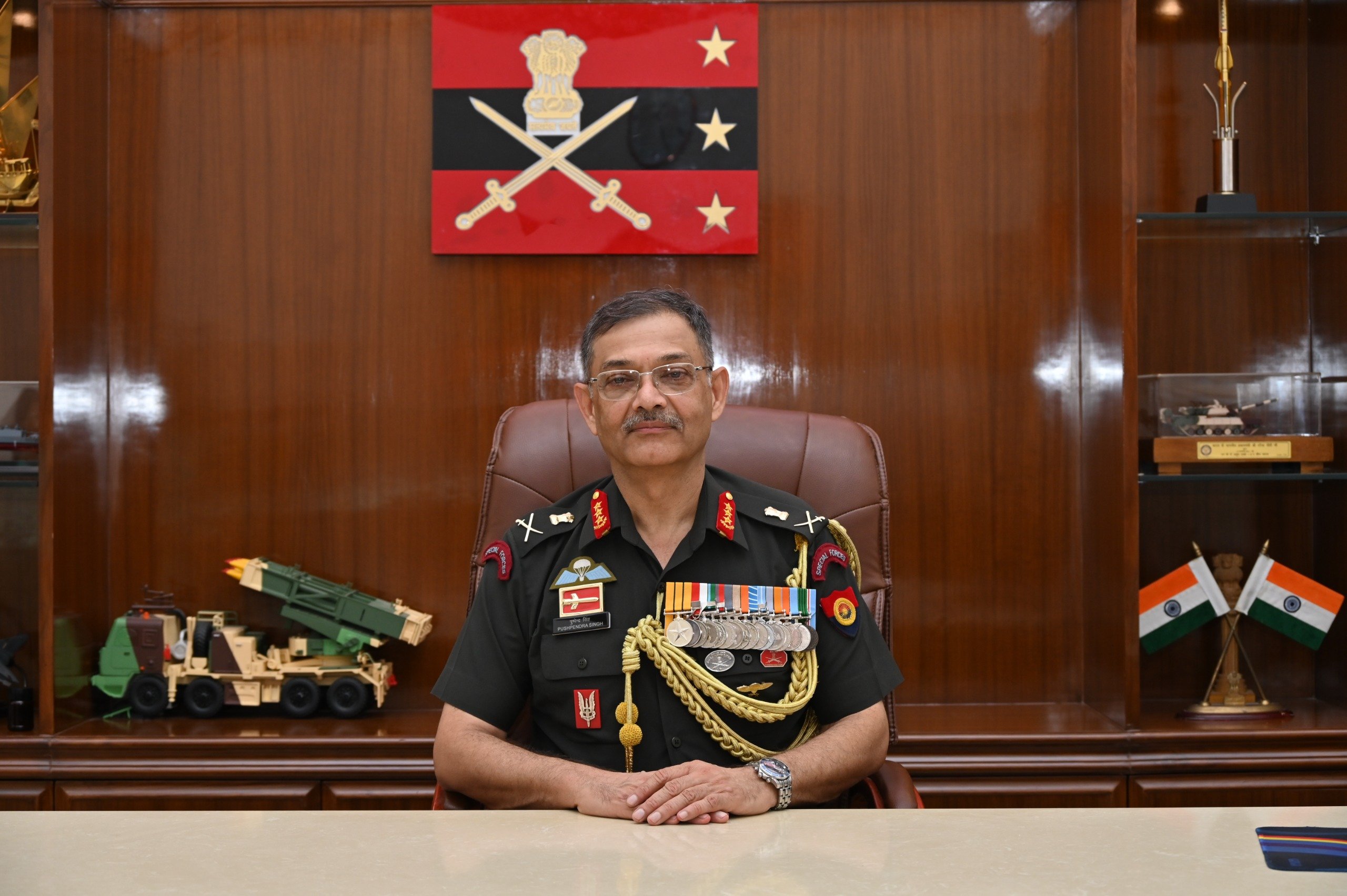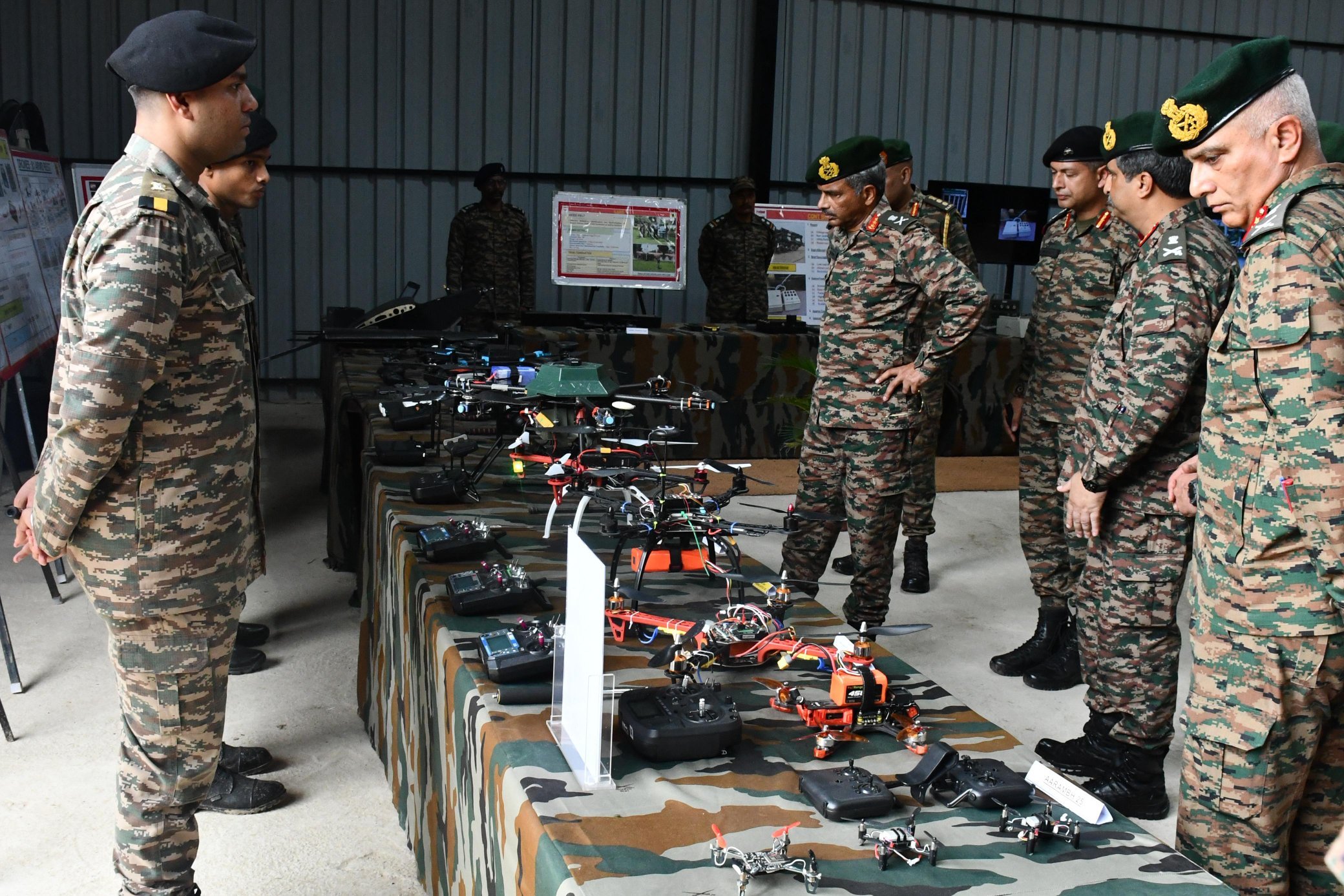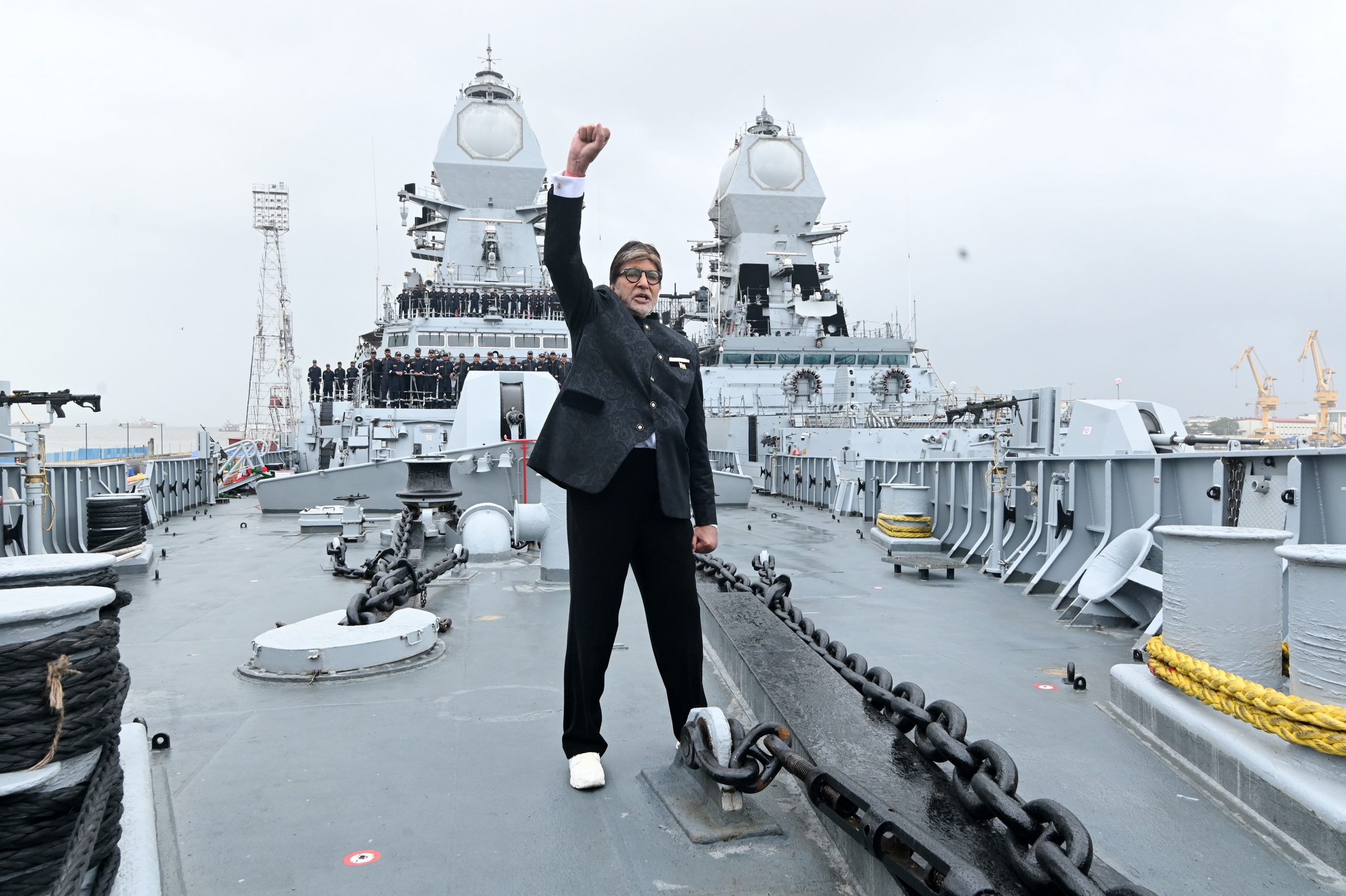Vice Admiral Manish Chadha Appointed Commandant of Indian Naval Academy
The Indian Naval Academy (INA) in Ezhimala witnesses a major leadership transition as Vice Admiral Manish Chadha AVSM, VSM is…
Vice Admiral CR Praveen Nair Assumes Charge as Controller Personnel Services at Naval Headquarters
Vice Admiral CR Praveen Nair, AVSM, NM, has taken over as Controller Personnel Services (CPS) at Naval Headquarters. He assumed…
Vice Admiral Vineet McCarty Takes Charge as Deputy Chief of Integrated Defence Staff (PP & FD)
Vice Admiral Vineet McCarty has officially assumed the post of Deputy Chief of Integrated Defence Staff (Policy Planning & Force…
Lieutenant General Pushpendra Singh Takes Charge as Vice Chief of Army Staff
Lieutenant General Pushpendra Singh assumed the post of Vice Chief of the Army Staff (VCOAS) today, taking over from Lt…
Indian Army Highlights Tech-Driven Warfare Capabilities in Brigade Review
The Indian Army reinforced its focus on technological transformation and battlefield innovation during a high-level review led by Lieutenant General…
Amitabh Bachchan Calls Indian Armed Forces His Pride After Indian Navy Warship Visit
Bollywood legend Amitabh Bachchan expressed deep admiration and national pride after spending an entire day aboard an Indian Navy warship.…

